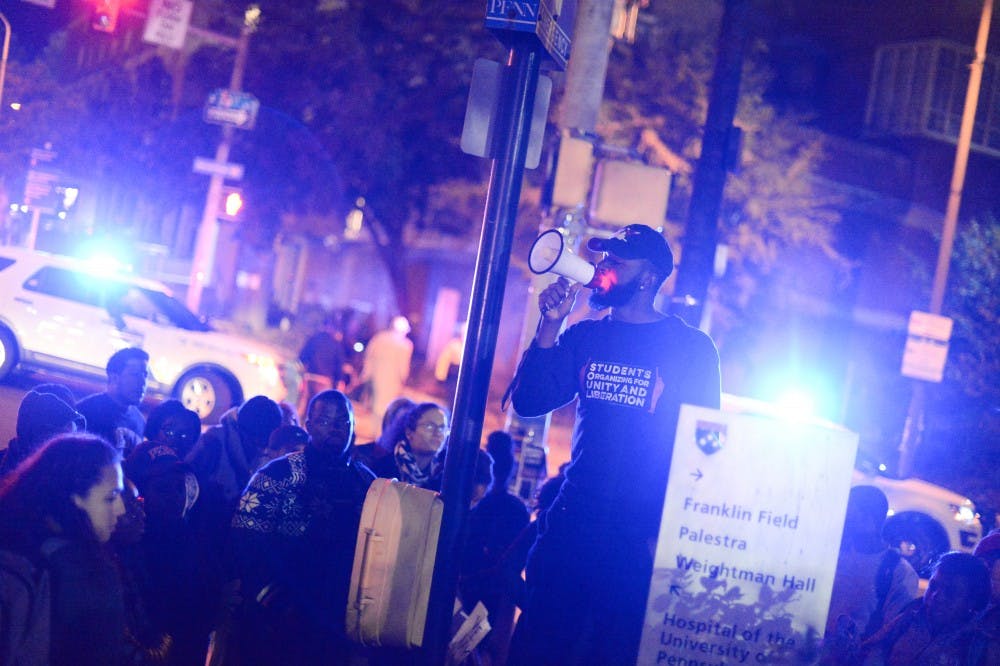Students across campus are planning to promote continued dialogue surrounding the Trump administration, which they see as a necessary first step for the future of campus election-related protests.
Students who created a public art installation critiquing Donald Trump’s cabinet picks, as well as newly elected Penn Democrats President and College sophomore Rachel Pomerantz, agreed on the importance of protests to make the public aware of the Trump administration’s activity in the coming months.
This was the main objective of the recent cabinet installation on Locust Walk, according to College sophomore Jolie Gittleman.
The display was created by a group of students, including Gittleman, as an assignment for the class, "Art, Design and Digital Culture" in the Fine Arts Department. It provided information about Trump’s recent cabinet picks by featuring actual cabinets adorned with information, photographs and quotes. Students also handed out flyers to supplement this information. Gittleman and College sophomores Caroline Kuchta and Vanessa Levy said they felt that their project was a success.
“We are very satisfied with the responses we got,” Levy said. She added that many members of the Penn community reported feeling more informed after viewing the art installation.
Gittleman added that there “really was no negative response” despite her initial concern that protests might be less effective now than they were before the election.
“We were wondering if a lot of people were sick of hearing political things,” Gittleman said. “We found that they weren’t.”
She cited the nuanced and specific nature of the cabinet installation as what drew people in and distinguished it from other election-related protests.
“We were able to keep a dialogue going and make our project specific,” Gittleman said.
Kuchta also emphasized the role of post-election protests in continuing dialogue.
“I was really worried after the election that the protests were going to stop. I almost think it’s more important to do protests now than it was immediately post-election,” Kuchta said.
“We need to make sure that people are actually making concrete actions toward fixing the things that they’re protesting,” she added. “The election isn’t just a thing that happened three weeks ago and is now over.”
Pomerantz echoed this sentiment and stressed the importance of continued awareness.
Other than focusing on upcoming political races, next semester, Penn Democrats hopes “to be visible and not complacent,” Pomerantz said.
“We will not let people forget how important the issues are and how perverted the Trump administration’s positions are from the norm,” she added. “The cabinet art installation by the group of Fine Arts students was a great example of how this could be achieved.”
Student were unsure about what future election-related protests will look like, but all reported feeling hopeful about campus activism.
Penn Democrats is “still in the formulation stage” of deciding what types of activism the group will conduct next semester, but will likely focus on women’s rights, LGBTQ rights, immigration and gun violence, according to Pomerantz.
The students that created art installation agreed that artwork is only one of the ways to make political statements.
“Though art tends to be political, hopefully people will be making use of other mediums to make political comments,” Levy said.
“People will use whatever skills they have to make an impact,” Gittleman added.
Pomerantz predicts that future protests “will take a multitude of forms” and emphasized the importance of staying informed.
Kuchta also stressed the importance of dispersing information through a mix of mediums.
“I just think it’s really important in this age when we don’t trust the media to have transparency in other ways and to get information across to people in ways that they actually will listen to,” she said.









